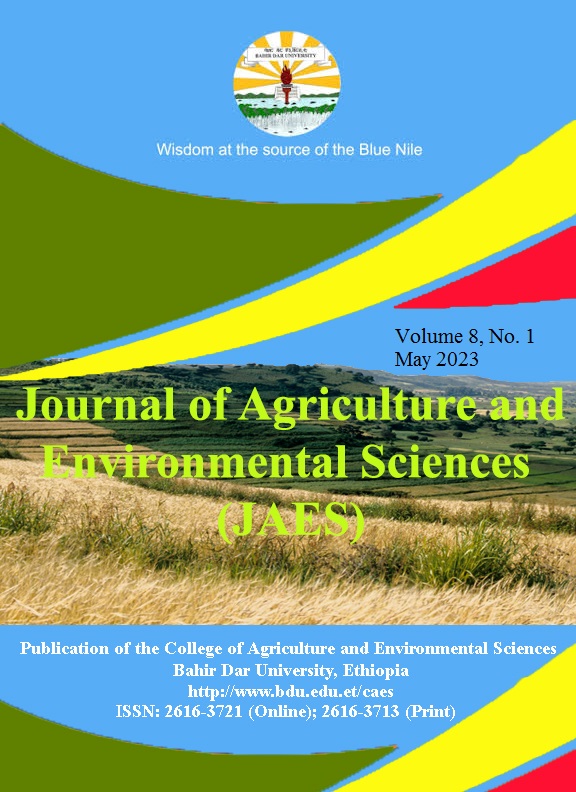Crossbred calf rearing method, pre-weaning morbidity and mortality in urban and peri-urban dairy production systems of Dangila district, Ethiopia
Abstract
The study was conducted to investigate the crossbred calf rearing method, pre-weaning morbidity and mortality in urban and peri-urban dairy production systems of Dangila district, Ethiopia. A total of 160 households were purposefully chosen from urban and peri-urban areas and interviewed using a pre-tested semi-structured questionnaire. For the monitoring study, 20 peri-urban households were purposefully chosen from a pool of 100 peri-urban households, and similarly, 10 urban households were chosen purposefully from a pool of 60 urban households. The findings revealed that the majority of dairy farmers in both urban and peri-urban dairy productions used colostrum feeding. In the study area, the most common methods of calf milk feeding were restricted suckling (49.4%) and bucket feeding (50.6%). Among the dairy farms monitored, 33.3% used separate houses, but during the survey, it was discovered that 59.4% used separate calf houses. According to the monitoring study, 36.67% of farms were found to have health problems in calves, which was similar to the survey result (41%). The major constraints for crossbred calf rearing were feed shortage and high cost, disease and parasite, water shortage, and lack of access to veterinary services. In this study, the overall incidences of crossbred calf morbidity and mortality rates were 19.4% and 0%, respectively. Therefore, improved calf management practices such as colostrum and other ration feeding, adequate housing, house hygiene, and proper waste disposal are strongly advised to prevent pre-weaning crossbred calf morbidity.
Copyright (c) 2023 Journal of Agriculture and Environmental Sciences

This work is licensed under a Creative Commons Attribution-NonCommercial-NoDerivatives 4.0 International License.
Authors who publish with this journal agree to the following terms:
- Authors retain copyright and grant the journal right of first publication with the work simultaneously licensed under a Creative Commons Attribution License that allows others to share the work with an acknowledgement of the work's authorship and initial publication in this journal.
- Authors are able to enter into separate, additional contractual arrangements for the non-exclusive distribution of the journal's published version of the work (e.g., post it to an institutional repository or publish it in a book), with an acknowledgement of its initial publication in this journal.
Authors are permitted and encouraged to post their work online (e.g., in institutional repositories or on their website) prior to and during the submission process, as it can lead to productive exchanges, as well as earlier and greater citation of published work (See The Effect of Open Access).


